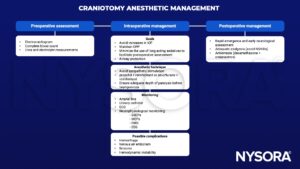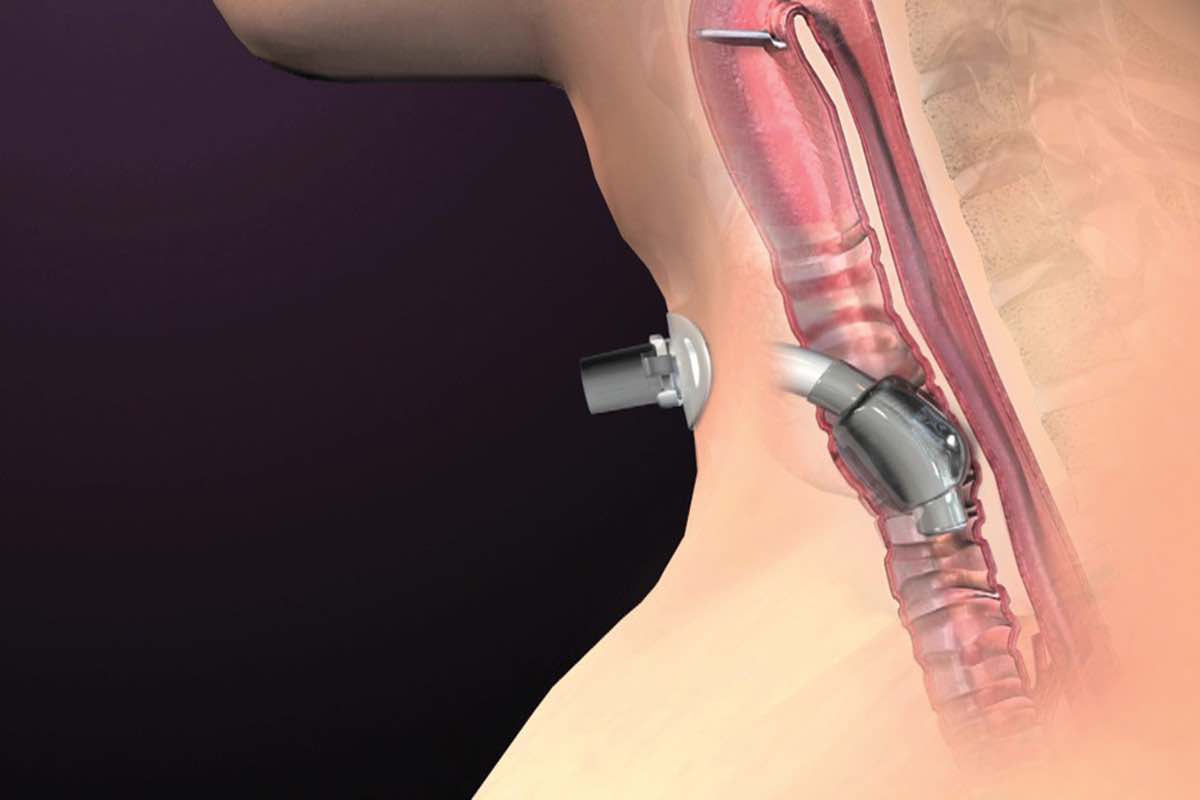Learning objectives
- Describe the principle, indications and contraindications of craniotomy
- Manage patients undergoing craniotomy
Definition
- Craniotomy is a surgical procedure in which a part of the skull is temporarily removed to expose the brain and perform an intracranial procedure
Indications
- Brain aneurysm
- Vascular malformations (arterio-venous malformation, cavernous angioma, arterio-venous fistula)
- Brain tumors (meningioma, high-grade and low-grade glioma, epidermoid, ependymoma, oligodendroglioma, metastases)
- Orbital tumors
- Pituitary adenomas
- Cerebellopontine angle tumors
- Pain treatment (microvascular decompression)
- Brain abscess
- Subdural empyema
- Hematomas (intracerebral, epidural, subdural)
- Decompressive craniectomy
- Lobectomy
- Epilepsy surgery
- Craniosynostosis
- Depressed skull fractures
- Intracranial foreign bodies
- Cerebrospinal fluid leak repair
Contraindications
- Advanced age
- Poor functional status
- Severe cardiopulmonary disease
- Severe systemic collapse (sepsis, multiorgan failure)
- Pathologies that can be addressed by a single burr hole
- Altered preoperative coagulation parameters
- Bleeding disorders
Management

SSEP, somatosensory evoked potential; MEP, motor evoked potential; EMG, electromyography; EEG, electroencephalography
Suggested reading
- Fernández-de Thomas RJ, De Jesus O. Craniotomy. [Updated 2022 Apr 9]. In: StatPearls [Internet]. Treasure Island (FL): StatPearls Publishing; 2022 Jan-. Available from: https://www.ncbi.nlm.nih.gov/books/NBK560922/
- Keown, T., Bhangu, S. and Solanki3, S. (2022) Anaesthesia for craniotomy and brain tumour resection, WFSA. Available at: https://resources.wfsahq.org/atotw/anaesthesia-for-craniotomy-and-brain-tumour-resection/ (Accessed: January 18, 2023).
- Dinsmore J. Anaesthesia for elective neurosurgery. BJA: British Journal of Anaesthesia. 2007;99(1):68-74.
We would love to hear from you. If you should detect any errors, email us customerservice@nysora.com







